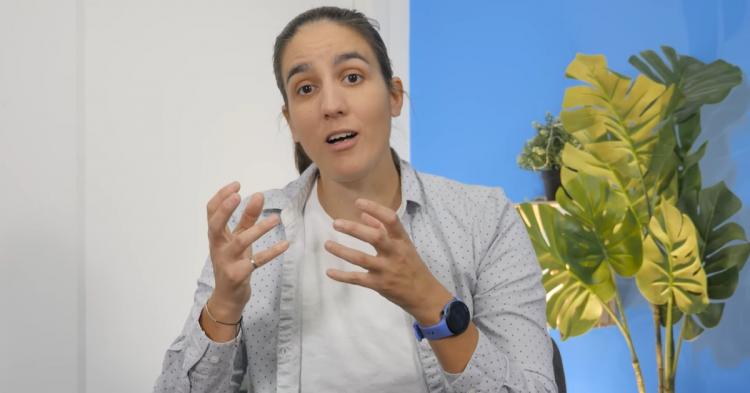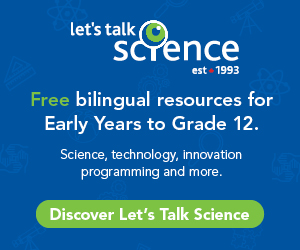How should you talk to journalists? What mistakes should you avoid, and above all, how can you ensure you're being understood? Viviane Lalande, an adept at making science accessible, offers answers to these and many more queries in a series of capsules presented on her YouTube channel Sci + The Goal? To better equip scientists and researchers who have to work with the media in Canada and around the world.

Viviane Lalande (Photo: YouTube)
Some thirty 5- to 10-minute capsules in the "Sciences & Médias" series address questions about how to manage science's moments in the spotlight, from interview preparation to the interview itself. Helping viewers navigate the subject are comments from researchers and scientists from diverse fields, as well as journalists.
On the agenda are tips and advice, as well as dozens of anecdotes about scientists' real-life experiences with the media - content that enables the less experienced to get a head start before they're even booked for a first interview.
"It was conceived as a 'pick and use format," explains Viviane Lalande, herself a Ph.D. in mechanical engineering and lecturer at Polytechnique Montréal. "I hope that researchers preparing for interviews will be able to find answers to the specific questions they have by selecting the vignettes most relevant to them."
So if you have time to watch only one of these great clips... which one should it be? The engineer and YouTuber suggests the clip that relates directly to preparing for an interview.
UNDERSTANDING A JOURNALIST'S JOB
While some of the capsules are intended to be tools for understanding the mechanics of an interview (for electronic and/or print media), others enable viewers to understand the constraints and goals that are part of a journalist's job.
For example, can scientists or researchers require that they get a pre-print article to review? Should researchers be worried about appearing in so-called 'trash' media? In this category of vignettes, the series creator particularly remembers the episode about controversial subject, with Yvan Huneault.
"I learned a lot when I did that one; it's a whole other way of looking at what an interview is," confides Viviane Lalande.
The project saw the light of day thanks to a grant from the Natural Sciences and Engineering Research Council of Canada - NSERC, earned by Professor Thomas Gervais (Department of Engineering Physics) at Polytechnique Montréal and former media science communicator. The Fonds de recherche du Québec - FRQ also supported the project.
Professor Gervais is one of the fifteen or so people interviewed by Viviane Lalande, a group that includes stress specialist Sonia Lupien, historian Laurent Turcot, and Polytechnique Montréal professors Sarah Dorner, Annie Ross, Frédéric Leblond, and Frédérick Gosselin.
"In my career in media and as an educator, I've lived the excitement and frustration of journalist-researcher encounters from both sides of the camera," says the man behind the project. "A French-language web series describing how experts can prepare to face a journalist, how to get their message across well both orally and in print, and one that raises awareness of the challenges of journalism was clearly missing. We hope that this little web series will inspire some of my academic colleagues to accept an interview or participate in a mainstream communications project," he adds.
The channel has been broadcasting episodes since September 27 at a rate of three new capsules per week. They can be viewed with international French or English subtitles. New episodes are planned until the end of November.
LEARN MORE
The Sci + YouTube channel
Thomas Gervais's expertise
Sarah Dorner's expertise
Annie Ross's expertise
Frédéric Leblond's expertise
Frédérick Gosselin's expertise













